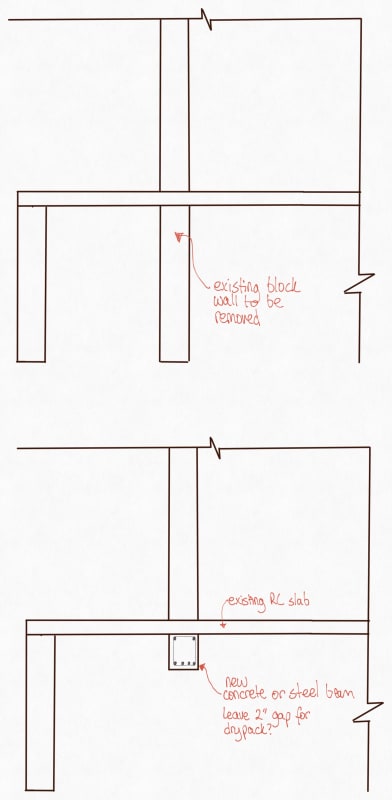psychedomination
Structural
Hi there,
I'm working on a residential project where the client would like to remove a wall, which is holding up a reinforced concrete slab and wall above.
See below :

I've carried out the structural analysis and the bending moment is relatively high due to the slab spans and the wall above(160kNm).
I'm wondering what the best approach for this would be. Should I specify a concrete beam or a steel beam? Which would be the easiest to construct? A reinforced concrete beam will need be about 450mm deep, which may be a negative from an aesthetic perspective. I can probably get a shallower steel section to work but the house is CMU and reinforced concrete so the steel beam would need to be concealed regardless.
I assume either option would require a 2" minimum gap for dry pack after?
Just checking to see if someone has a more cost-effective alternative that they would be willing to discuss.
I'd appreciate any advice really.
I'm working on a residential project where the client would like to remove a wall, which is holding up a reinforced concrete slab and wall above.
See below :

I've carried out the structural analysis and the bending moment is relatively high due to the slab spans and the wall above(160kNm).
I'm wondering what the best approach for this would be. Should I specify a concrete beam or a steel beam? Which would be the easiest to construct? A reinforced concrete beam will need be about 450mm deep, which may be a negative from an aesthetic perspective. I can probably get a shallower steel section to work but the house is CMU and reinforced concrete so the steel beam would need to be concealed regardless.
I assume either option would require a 2" minimum gap for dry pack after?
Just checking to see if someone has a more cost-effective alternative that they would be willing to discuss.
I'd appreciate any advice really.
